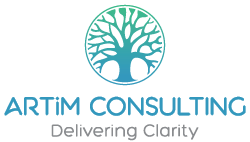We work with you to improve accessibility of information, both within your organisation and with external stakeholders, using mapping to uncover the underlying structure of information as well as helping you articulate this information so it is easily available for those who need it.
Mapping your Information
Information mapping is a structured approach for exploring, assembling and presenting information. Classifying information into certain categories and applying a set of principles can improve accessibility to information.
- Classification: All information can be categorised in a consistent way into a small set of types like procedure, process, principle, etc. Each type of information is associated with a certain form of information gathering and presentation. Readers who become accustomed to this categorisation are able to locate and use information much more efficiently.
- Principles: The process of organising the information is guided by a set of principles such as chunking, labelling, integration of images and so on. When these principles are applied, information becomes more easy to locate, understand and use.
Information mapping skills can be quickly learnt and applied to improve the quality and availability of information. For writers, this makes the process of writing faster and more efficient. Readers can find and internalise information much quicker. Organisations can respond quicker, reduce cost and improve risk mitigation.
We can help you map the information in your organisation or help your employees get to a point where they can do it themselves.
Articulating your Information
Examples of information employees need include an understand of the organisation and its processes, what they can or cannot do and how to perform the tasks for which they are responsible. For information to be useful, people who need it should be able to easily locate and absorb it. Technical communication is the process of converting information into usable form, e.g. documents.
We use formal approach to develop the documentation. Each of the steps is designed to help you be in control of the process so you get exactly what you need. The process also helps you to proactively manage risk at the right time and reduce rework.
- Develop Document Set: This results in a list of the documents that will be produced, specifying the purpose, audience and usage for for each document. This stage helps you control the scope and direction for the project.
- Design Structure: This is the high level content of each of the major sections of each document and the presentation design. Think of it as a high-level table of contents. This stage helps you identify any big areas that have been missed or if there are any issues with the planned appearance of the documents.
- Develop Content: Here we gather, assemble and write the draft. The draft is not necessarily in the same form as the final document. The focus here is a technical review to ensure accuracy and currency of content.
- Lay Out the Documents: This step delivers a draft of the final documents showing exactly what they will contain and what they will look like. At this point you can still make changes, but give the review process up to this stage, they would be minor.
We can take you through this process gathering, analysing and presenting the information to produce a range of documents such as policies, procedures, user manuals and tender proposals.
